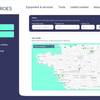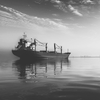Keys to Controlling Consequences in the Wake of a Marine Casualty
In the June issue of Marine News, we outlined the advantages of adding MOPS License Insurance protection to your deck and engineering officers' employee benefit package to help not only recruit but retain your key personnel in this very competitive employee environment. We pointed out that MARAD studies starkly declare that there are not enough qualified license mariners to meet the industry's needs and that 88% of respondents to a recent MARAD survey reported that licensed officer retention issues have negatively impacted their business operations.
In response to the article, many Marine News readers responded that they take care of their licensed officers internally and react to any inquiries regarding marine casualties or reportable incidents as required. The problem with that approach is that it's by definition reactive and not proactive. To protect the licenses and livelihoods of affected officers, it is imperative that both the licensed mariner involved and his/her employer aggressively work with Coast Guard investigators, providing them with what they are entitled to while protecting company and employee rights whenever possible.
To illustrate how important it is for your licensed officers to have immediate access to an experienced local maritime attorney to help guide them through the process, we have outlined below the wide array of activity and responsibilities confronted in the 24-48 hours period immediately following a typical marine casualty.
For this example, we will assume the casualty to be a minor collision, involving two towboats. For an accurate timeline, we consulted with MOPS Marine License Insurance Legal Coordinator, William Hewig, III. Mr. Hewig, who has handled dozens of license defense cases, is a principal in the law firm of Kopelman & Paige, PC.
The Collision Occurs … the Clock Starts
• As soon as your vessel is secure and injuries are tended to, your master/pilot must immediately report the incident to the U.S.C.G. via the designated VHF reporting channel. U.S.C.G. will want to know: the time, location and nature of the casualty; the extent of the damage to your vessel; the identity of the other vessel(s) involved; if there was any environmental damage (i.e. oil or chemical spills) ; the number of persons injured (if any); the vessel's current position; and whether the vessel is able to proceed. In some instances, U.S.C.G. may order the vessel to remain on scene, order it to divert or continue on its voyage. It is imperative that the master clearly understand and comply with the U.S.C.G.'s instructions in this regard.
• As soon as possible and immediately upon request, the master must respond to any U.S.C.G. request for vessel and/or crew safety information.
• As soon as possible, all crew members involved in any way with the casualty must submit to drug and alcohol tests in accordance with U.S.C.G. requirements and company policies.
• Within twelve hours (or first available landing or boarding area accessible to U.S.C.G. investigators) a U.S.C.G. Boarding Party will board the vessel to conduct the first phase of its casualty investigation. The U.S.C.G. team will review all 'Voyage Records', including logs, charts, fathometer, engine order, course recorder, GPS, etc. U.S.C.G. investigators will generally accept copies of most materials, but require the original chart. All crew members, with knowledge of the casualty, will be interviewed, but have the right to be represented by their own counsel or to confer with their employer prior to or during the interview and prior to signing any statement requested by the U.S.C.G. Finally, investigators will then inspect and/or test all safety gear (whether relevant to the cause of the collision or not) and photograph all areas of damage.
• Within 48 hours (or very possible sooner), U.S.C.G. will conduct formal interviews of crew members (and possibly company officials) at a U.S.C.G. shore location or, if none is available, aboard the vessel. Here again, licensed personnel, other crew members and company officials have a right to be represented by counsel and to have counsel review any statement for which the U.S.C.G. requests a signature. Investigators may request to record the interview(s), but if interviewees agree, they should request a copy of the tape and reserve their rights to submit any written corrections to the tape they wish to become an official part of the investigation record.
• Finally, although not technically required for five (5) days, the affected licensed officer(s) must prepare and forward to U.S.C.G. the form CG 2692, Report of Marine Casualty. Minimally, this 2692 form should be reviewed by counsel, but preferably prepared in conjunction with counsel.
Proaction Produces Positive Results
All in all, the two-day period immediately following a typical marine casualty, like a minor collision, is critical to reaching a positive outcome as it relates to the license(s) of affected officers. By extension, that positive outcome will also benefit his/her employer as the U.S.C.G. is less likely to pursue negligence charges or civil penalties if its investigation reveals that the collision was not the fault of those responsible for the vessel's operation.
In the September issue of Marine News, we will analyze the chain of events triggered by a U.S.C.G. charge of negligence, and the toll those Suspension and Revocation (S & R) proceedings take on all involved in both human and financial terms.
About the Author
Randy O'Neill is Senior Vice President, Lancer Insurance Company. For more information, contact Randy at [email protected]; Tel: (516) 431-4441, x3300.










